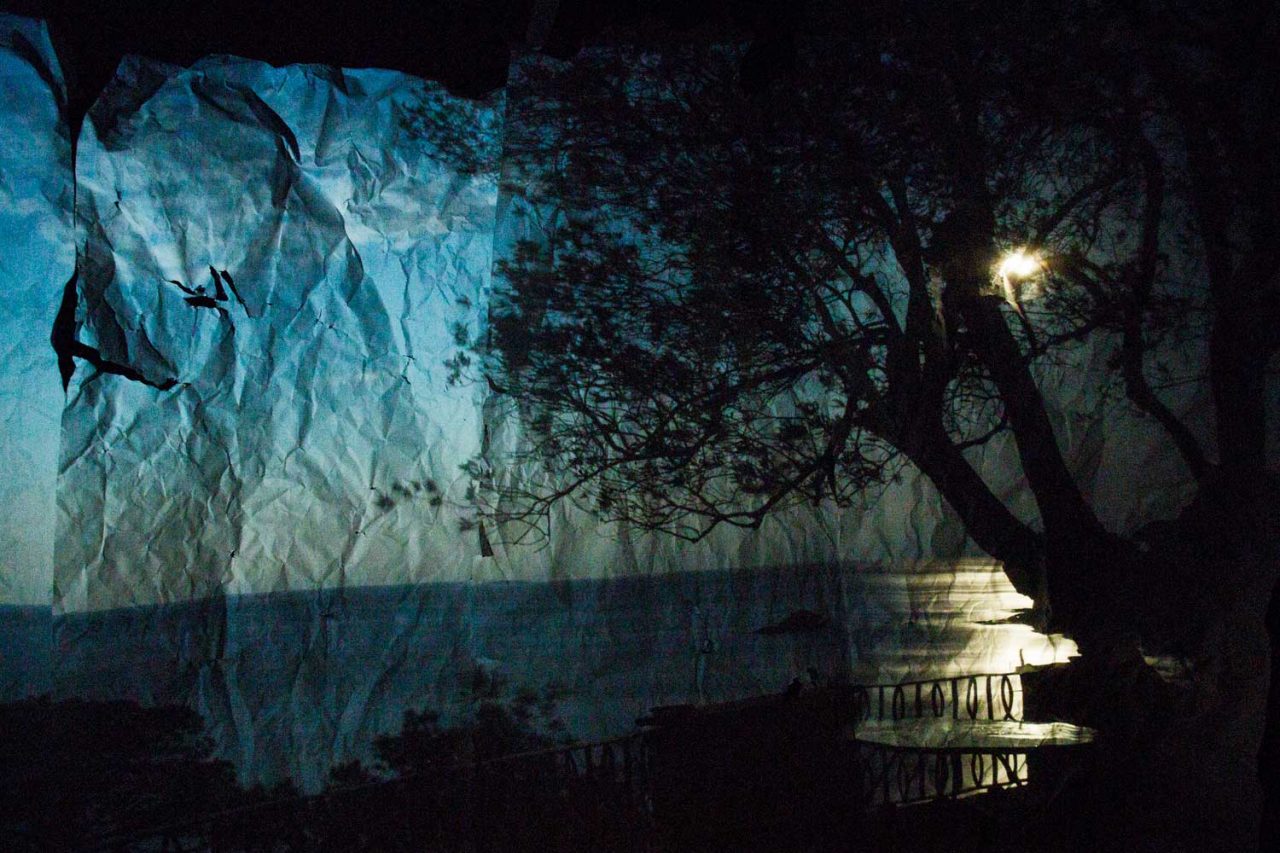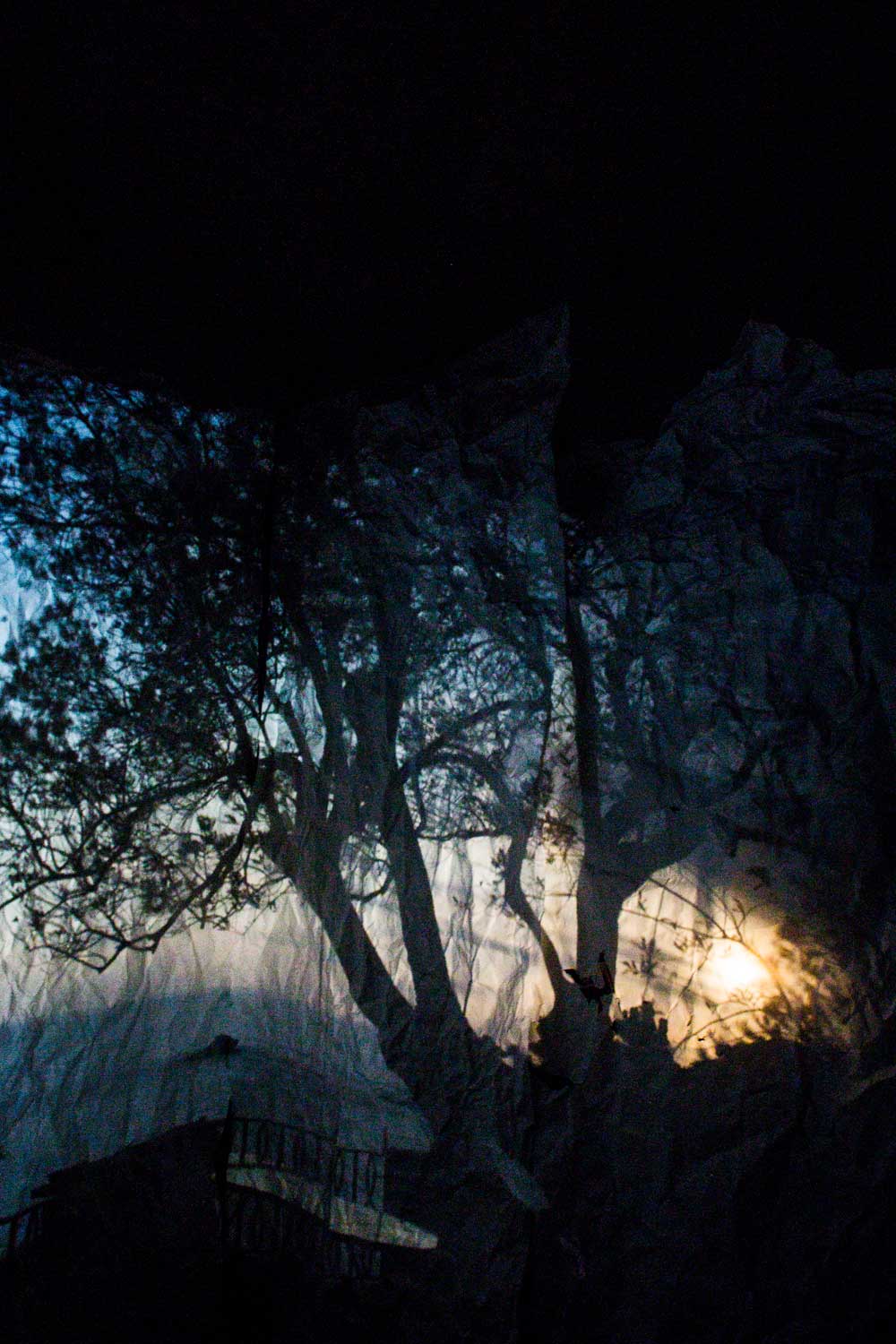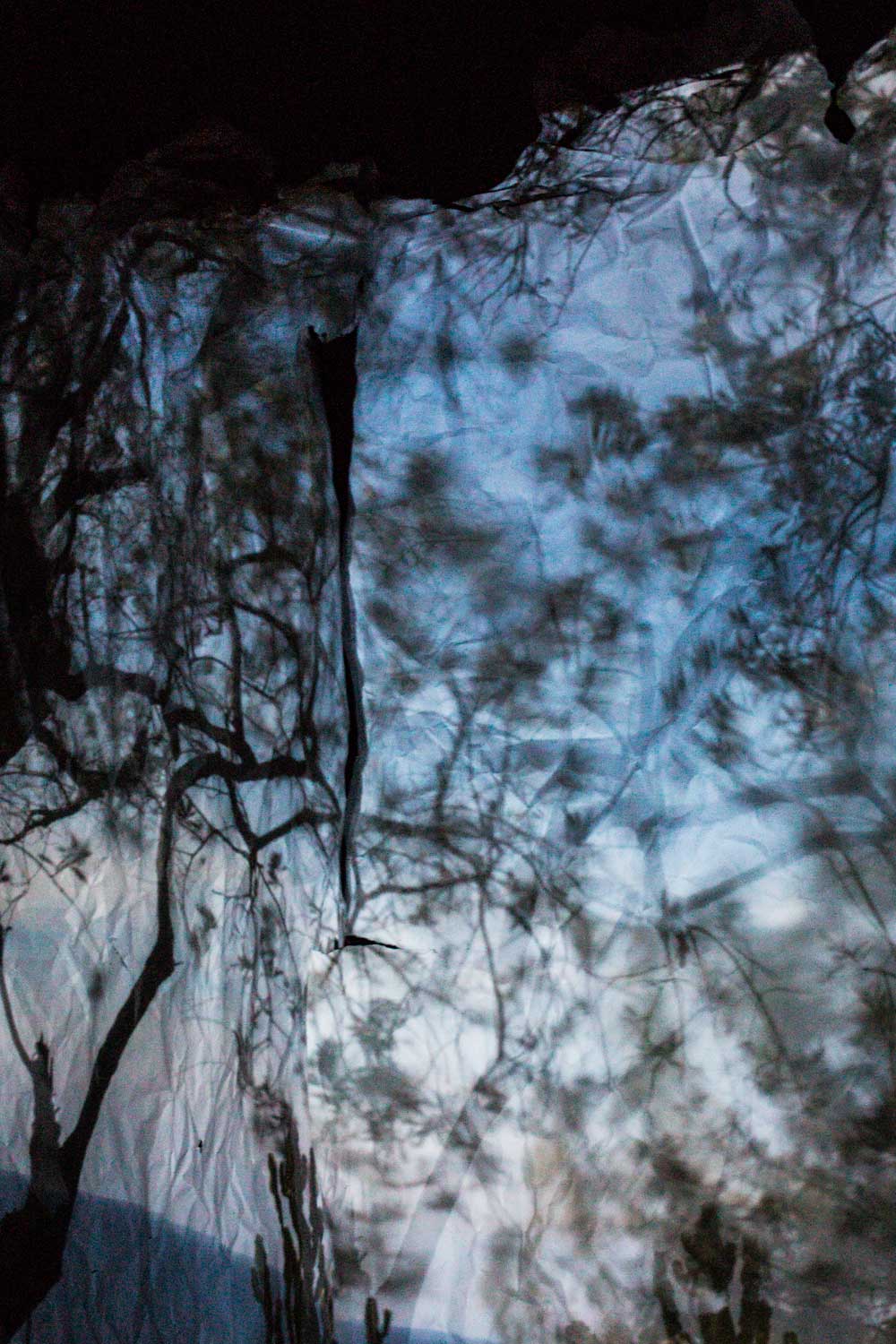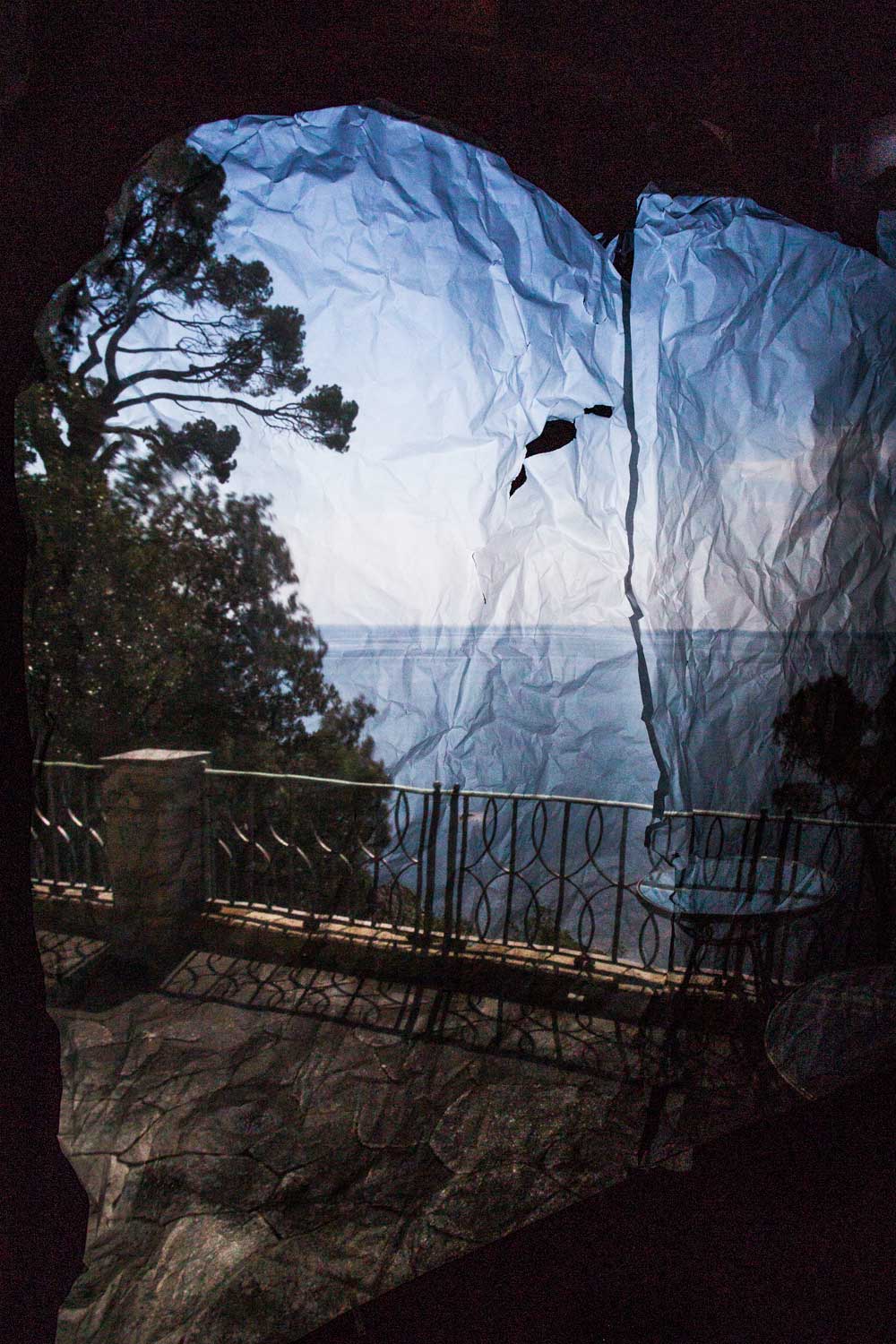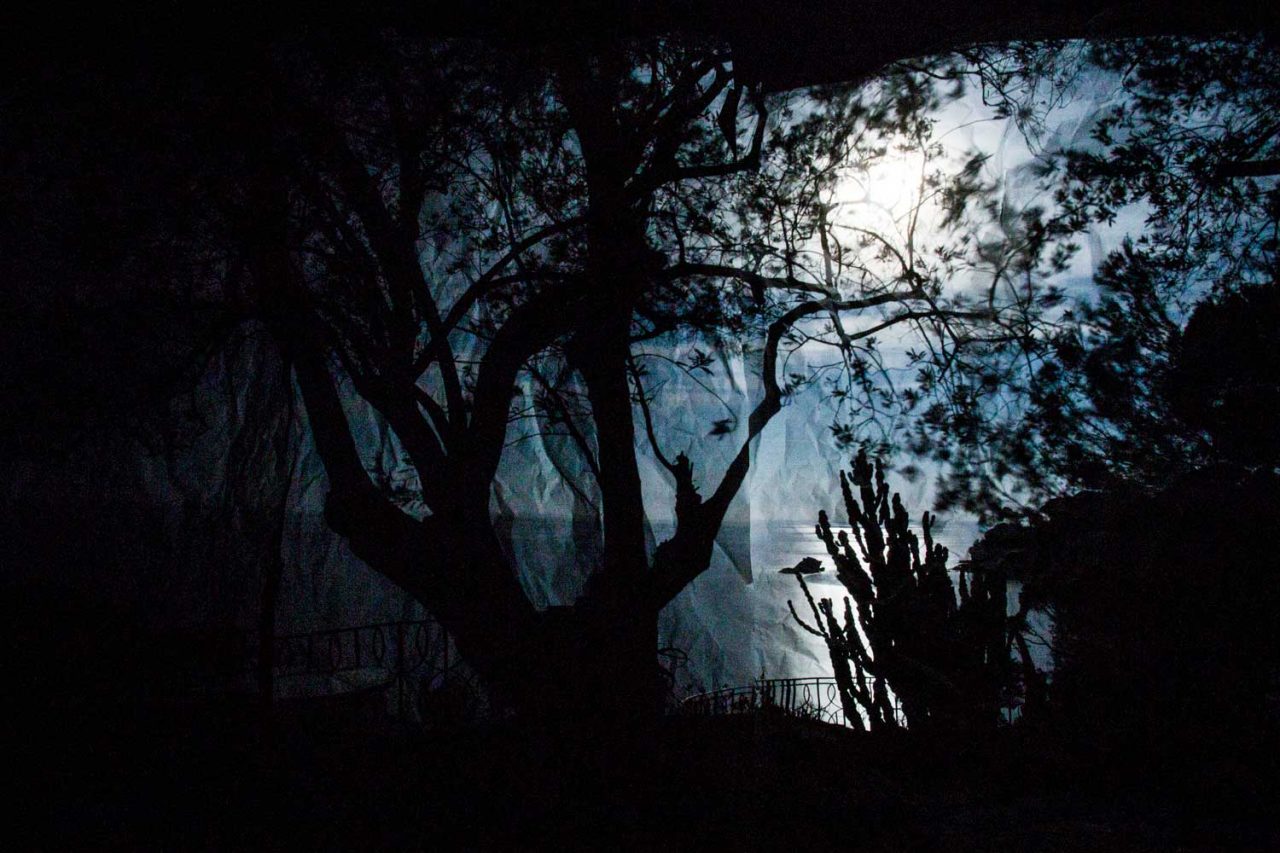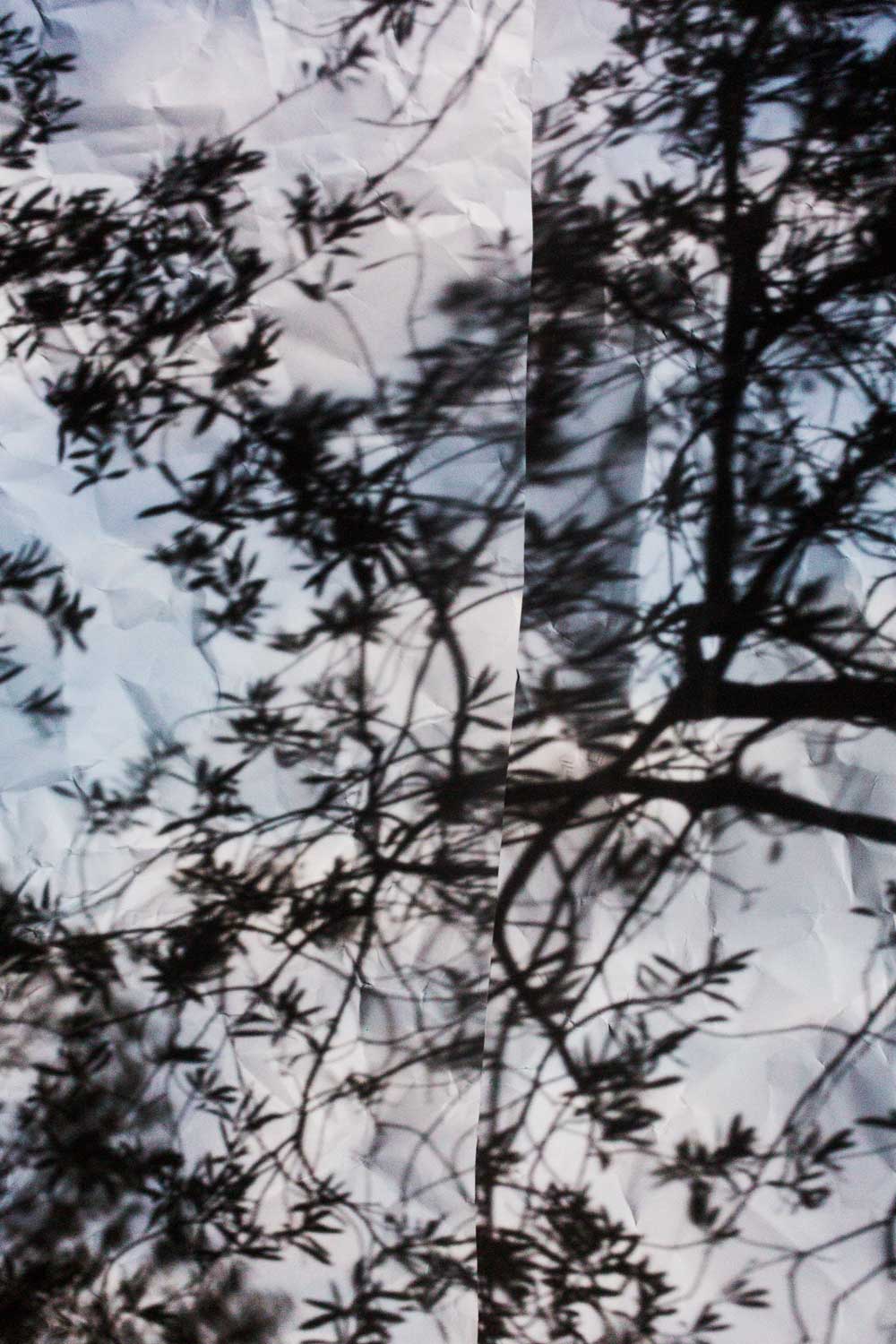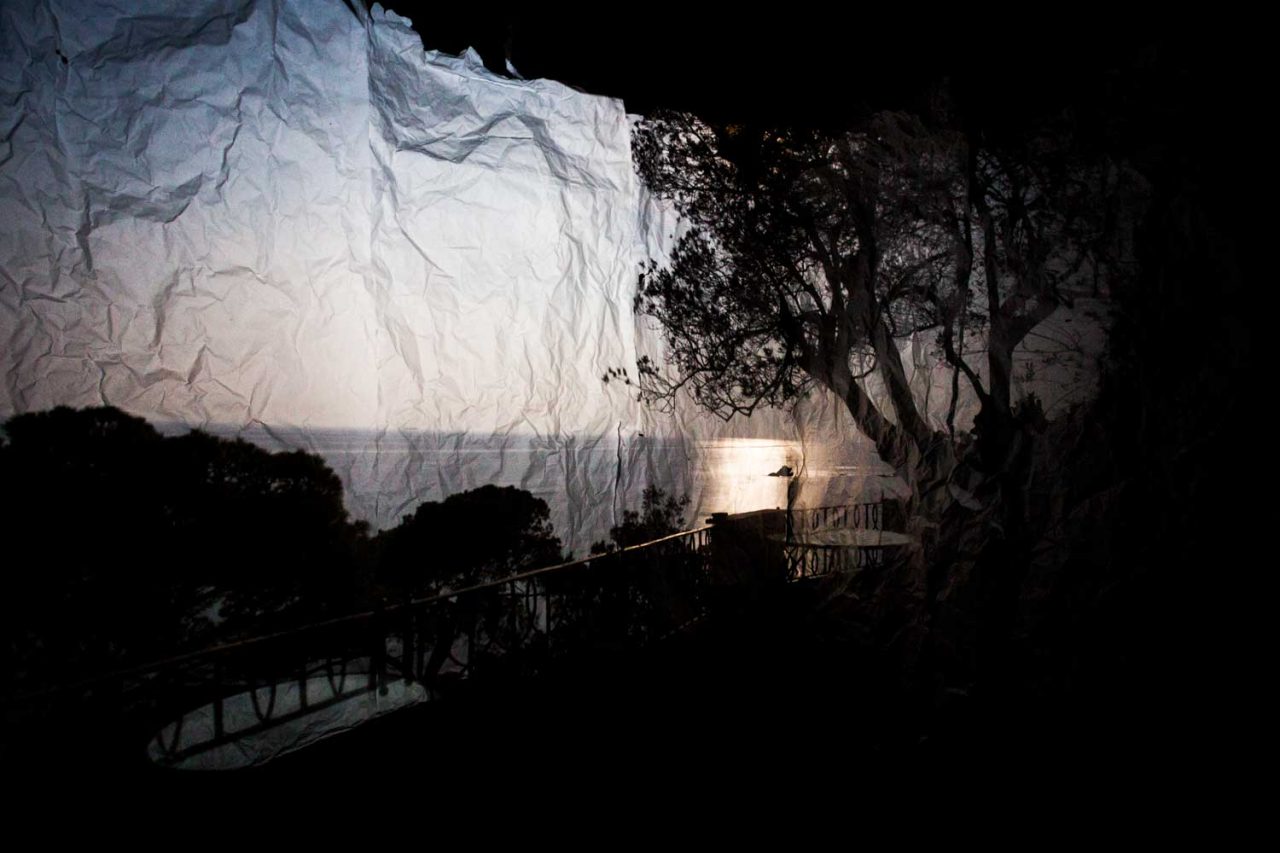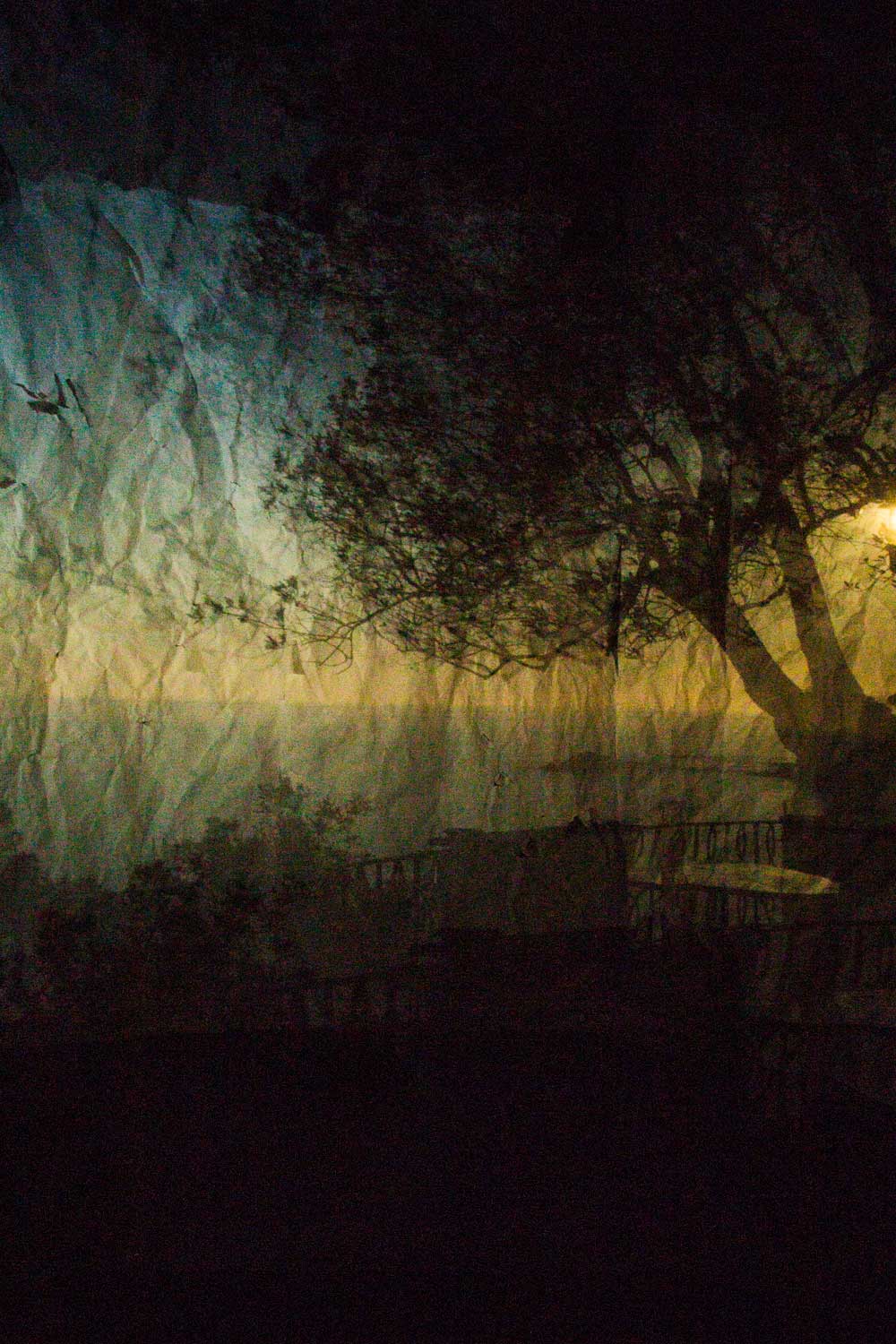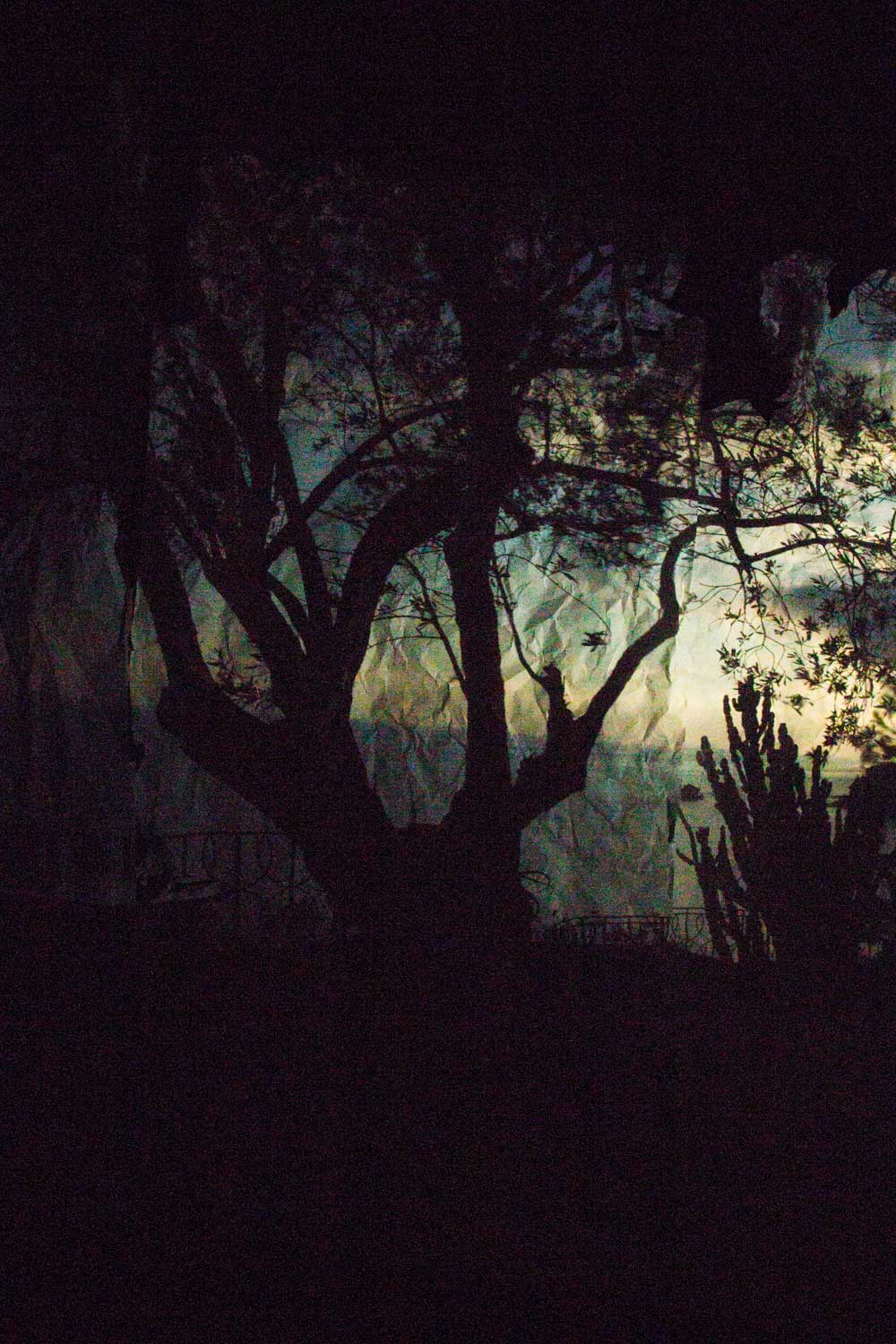Nostalgia in Blue
Viviana Peretti & Caroline Brothers
To step inside Viviana Peretti’s camera obscura is to witness the very process by which memory is made. The poetic beauty of the photographs she creates with it feels unmediated; one after another, these raw and delicate images carry us back into our own deep past. They speak to the earliest days of our own individual experience, a pre-verbal time when knowledge was unformulated, before we had tools like art and language with which to make sense of the world.
The camera obscura, a dark box with a pinhole to let in the light, was the first camera ever to be made. The principles behind its function were long known to the ancient philosophers; used by astronomers for centuries for the safe viewing of solar eclipses, it was popularised in the sixteenth century as an aid for drawing. It was only in 1827 that a Frenchman called Nicéphore Niépce saw the potential for combining both uses, using the technology to create images with the sun. Experimenting with light-sensitive emulsions, Niépce managed to fix what is considered the world’s first photograph – a grainy black-and-white image that emerged after an exposure of at least eight hours. This photograph reproduced what Niépce could see from his workroom, most likely the attic of his home in Burgundy: stone walls and a roof, now known as View from the window at Le Gras. He called this image, captured on a sheet of bitumen-coated pewter, a heliograph – literally, a sun drawing.
While Niépce’s camera was small enough to place on a table, Peretti’s version is literally a chamber: a dark room in which you can sit down or walk about. Part machine, part installation, she built it to be dismantled, leaving no trace but the photographs she used it to produce. Peretti created her camera from found objects she collected on an Italian coastline ragged with subsidence, where cables restrain the falling Mediterranean pines. In a summer chalet on the edge of a cliff-garden, she cobbled together black plastic bags and Sellotape, pieces of cardboard and sheets of torn white paper recycled from a business in the village nearby. Everything about this instrument feels perilous and ephemeral, appropriate perhaps for a set of images concerned with a return to origins, and nostalgia for a scarcely remembered time.
To enter this camera obscura you knock, Peretti lets you into the chamber and you stand there, made vulnerable by the darkness you’ve stepped into. She guides you to a chair while your eyesight struggles to adjust from the intensity of the afternoon glare. After a moment, she retracts the cover over a tiny hole she has made in the blacked-out window, and in pours the blinding white light.
It projects onto a screen she has hung inside, made of great sheets of crumpled white paper, in places mended and torn. They hang like bedsheets on the laundry lines of her childhood, giving texture to the wash of pinhole light.
Your eyes then start trying to decipher things, striving to understand. Before them, shapes and shadows hover as if conjured into existence, as mysterious as impressions absorbed by an infant in the very first months of life.
All that is discernible is shadow play: illegible black-on-white forms. Slowly, however, your eyes begin to make sense of what lies before them. Branches emerge, then twigs and leaves, and lines that might be the railings of a fence. Yet still you feel disoriented; in the darkness there is nothing that will allow these visions to connect.
Then, even as you watch, the soft white wash begins to change. It becomes grey with a silver sheen before you realise that in one corner the sheen is moving – and suddenly your mind lurches and you begin to see. Before you, upside down and caught by the screen, sprawls the vast, breeze-ruffled Mediterranean. There’s a rock-island in the sea beyond the trees and railings, an ashtray someone has left on a concrete pillar, the sea twinkling in the afternoon sun.
That sparkling is a surprise; a moving image where you’d have expected all to be still. But then, you remember, you are inside the camera obscura, and what is projected onto Peretti’s screen is life as it appears to the open eye of the camera – before time halts when the shutter is squeezed.
Yet even from that viewpoint, the universe seems strange: it may be alive and moving, but it is flipped into reverse and turned on its head. That upside-down, back-to-front vision is the world as it impresses itself on your retina before the brain corrects it, before cells at the back of the eye dissect the spectrum into waves of light and let the colours in.
The eye cannot discern the full range of colour inside Peretti’s camera obscura. But a digital camera, its mechanical eye mounted on a tripod inside the chamber, can detect latitudes of the spectrum that in low-light situations are invisible to human beings. And the long-exposure images Peretti captures in digital format, instead of on glass or pewter, bring back the colours of the outside world.
And overwhelmingly, the colour it brings back is blue. As the sun sinks towards the horizon, the camera brings forth the blue of the Mediterranean in the late afternoon in springtime: Peretti’s ‘sun drawings’ shimmer with a softer version of the aquamarine sea and the cobalt sky.
For the past two decades Peretti has lived far from Italy: between landlocked Bogotá and the glass and concrete corridors of New York. The urban blue of these other cities is different: sullied by pollution, or glimpsed in tranches between the skyscrapers that shrink and frame and hold the horizon at bay. Over all this time she has taken photographs, often in black and white. But when she considers her homeland, what comes to her is not its language or architecture or music, not works of art nor the images of its saints. Instead it is this colour, which on this April day in Liguria engulfs you and enfolds you in its ever-deepening hues.
Blue is the colour of her father’s Sardinia, the colour of her childhood summers, the colour of nostalgia for home. It is the place she carries inside her when she moves through foreign landscapes. It is an emotion and a sensory awareness, and it travels much further than sound, much further than light.
To linger among the shadows inside Peretti’s camera obscura is to sense how memory is born: in reverse and upside down, mysterious and strange. Her camera – this simple hut with its blacked-out windows – is something like a telescope that looks back to the origins of the universe. It carries us back to that moment when we first began to formulate memory, when the world loomed large and flickering and ungraspable, to that time where we moved without words.
Caroline Brothers
Photographs © Viviana Peretti

